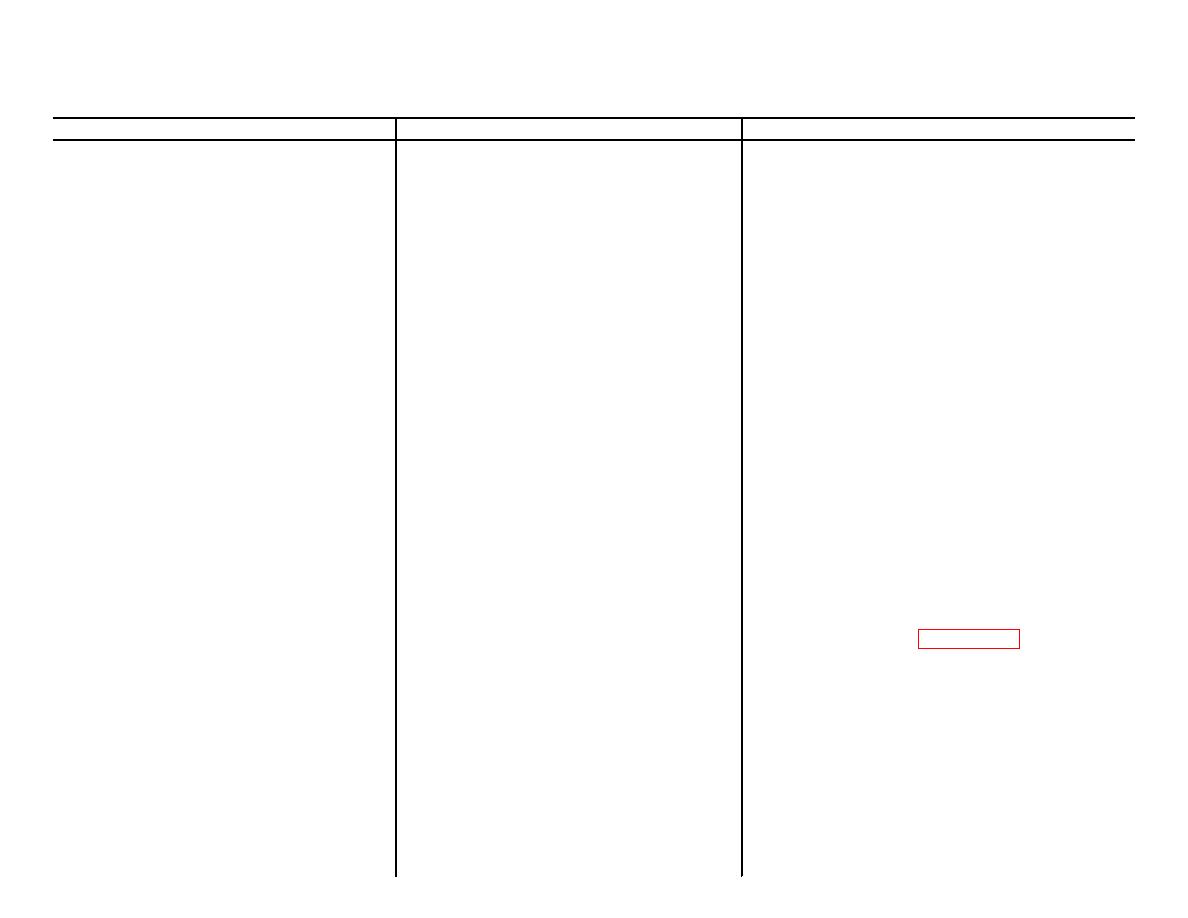 |
|||
|
|
|||
|
Page Title:
Table 4-2. Organizational Troubleshooting Chart |
|
||
| ||||||||||
|
|
 TM 11-6140-224-13&P
Table 4-2. Organizational Troubleshooting Chart
CONDITION
PROBABLE TROUBLE
CORRECTION
No storage battery voltage.
Battery is discharged.
Charge with a power source having a
minimum available voltage of 30 volts.
Fuse blown.
Disconnect battery from external loads.
Replace fuse. Apply charging voltage of 30
volts minimum to reset latch relay.
Fuse connections are loose or dirty.
Clean and tighten fuse contacts.
Defective control module.
Check voltage between Pin 1 (minus) on top
connector and socket A (plus) of internal
connector. If normal voltage is present,
higher category of maintenance repair re-
quired.
Battery temperature above 150F.
Place battery in shade to cool.
Battery over temperature cutout defec-
Higher category of maintenance repair re-
tive.
quired.
No storage battery voltage after
Defective bypass diode
Let battery stand for 1 hour until pressure
full charge.
switch resets. Voltage will then appear at
battery terminals. Higher category
maintenance required.
Low storage battery voltage.
Battery is partially discharged because
Fully charge battery, then recheck voltage.
of use or extended storage.
Test in accordance with paragraph 4-9. If
readings are above 1 volt, higher category of
maintenance repair required.
One or more unbalanced or defective
Charge battery at 200 mA for 16 to 20
cells.
hours. If voltage still remains low, higher
category of maintenance repair required.
4-7'
|
|
Privacy Statement - Press Release - Copyright Information. - Contact Us |